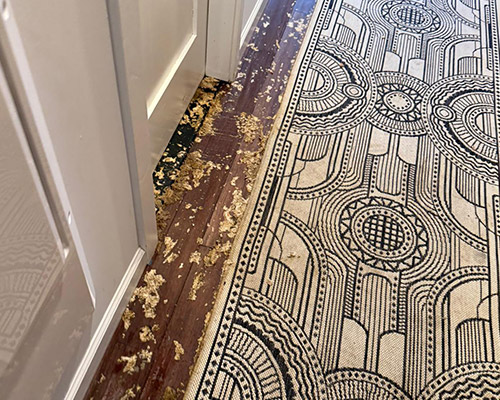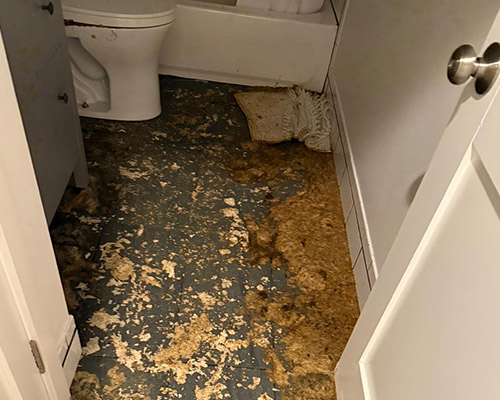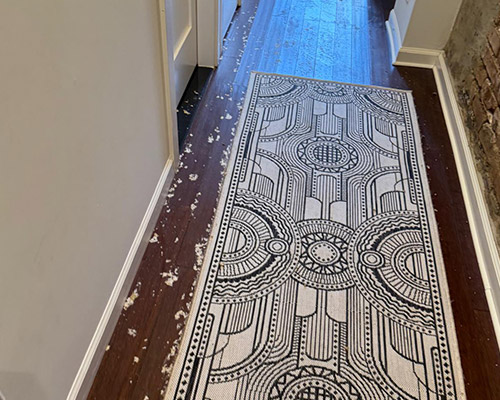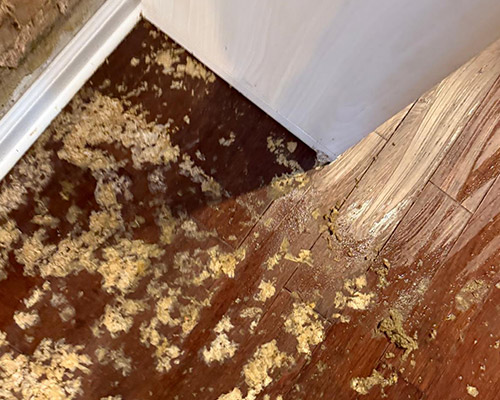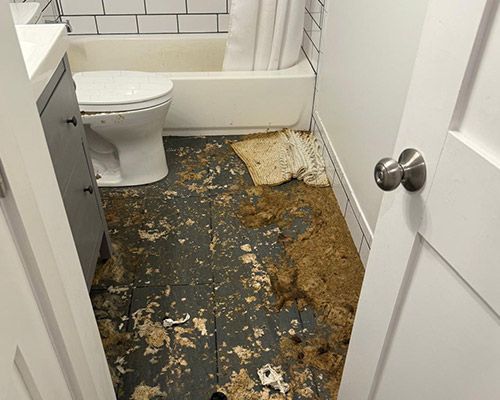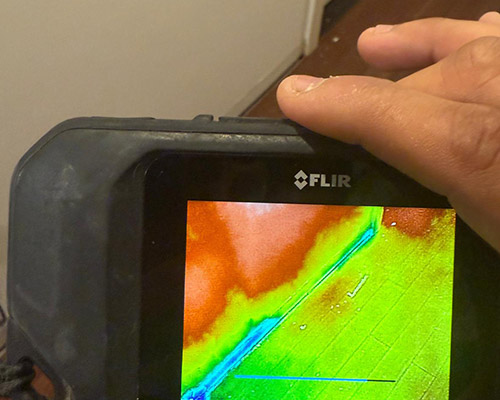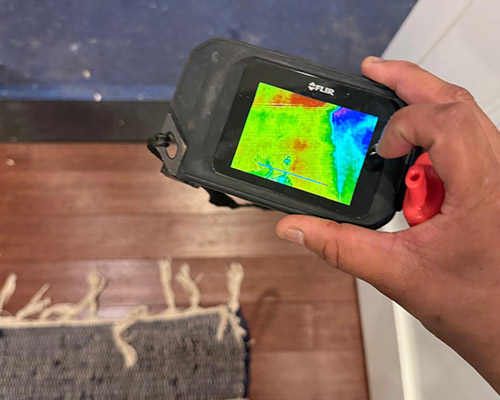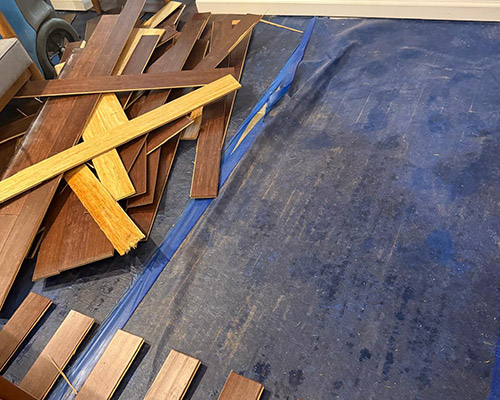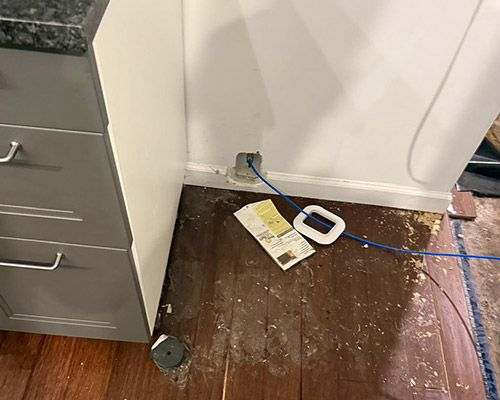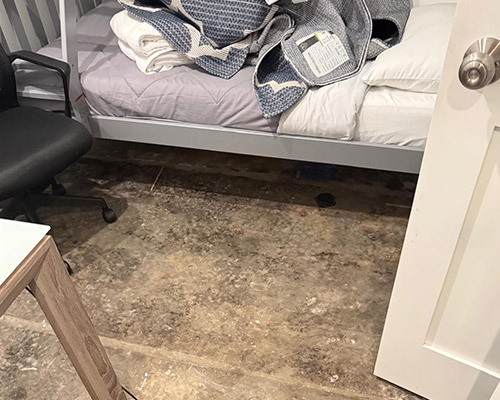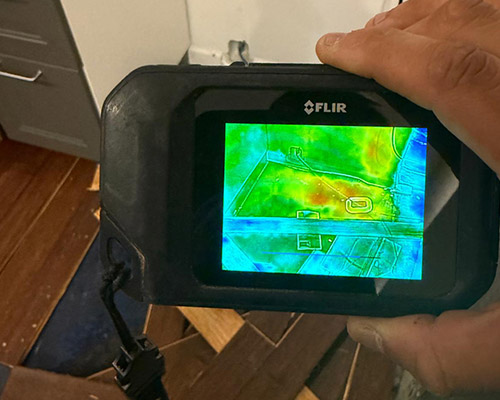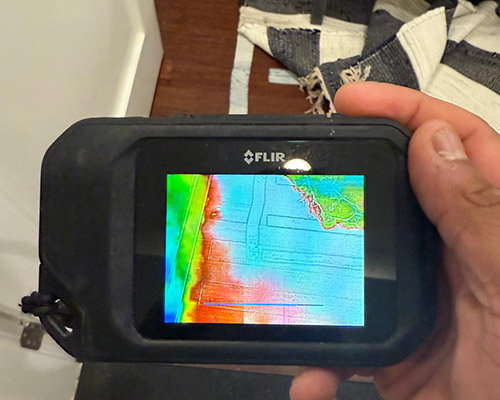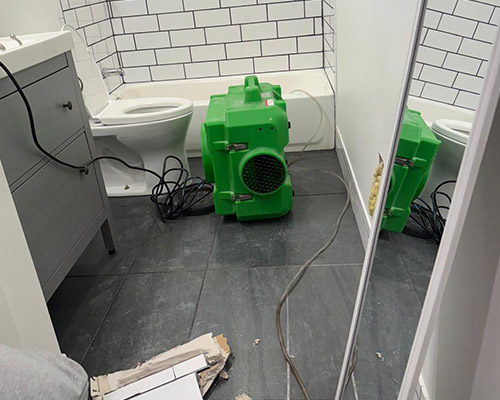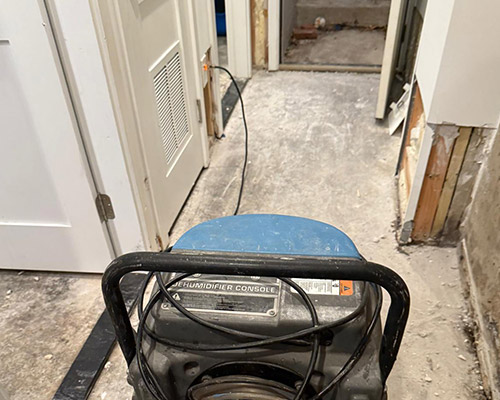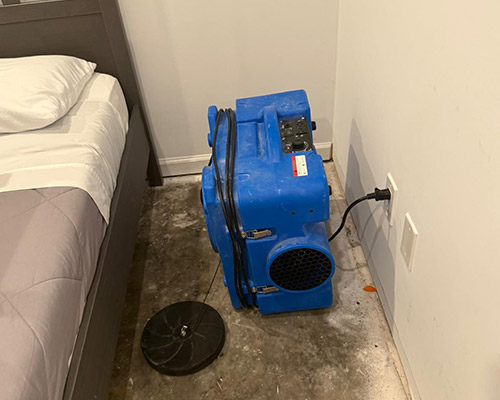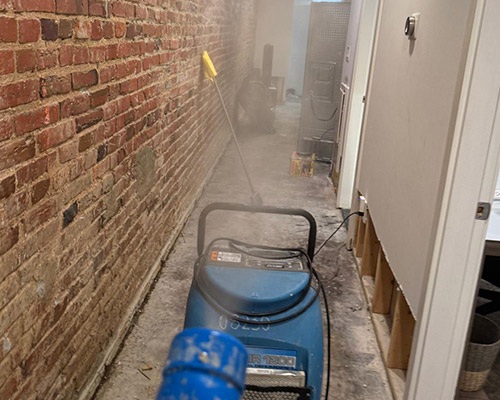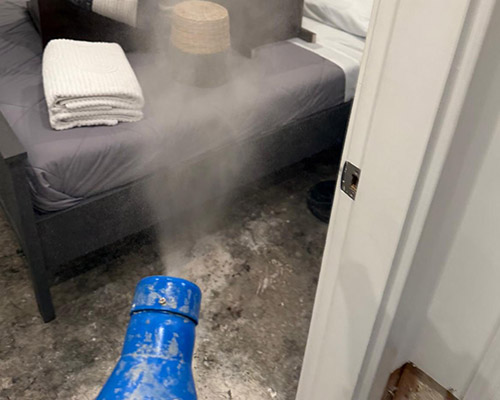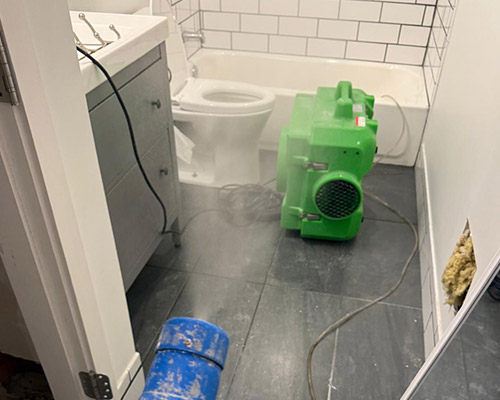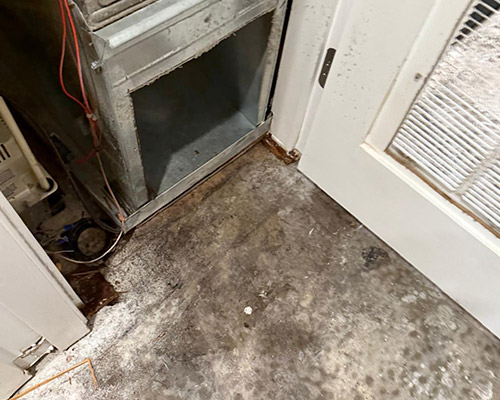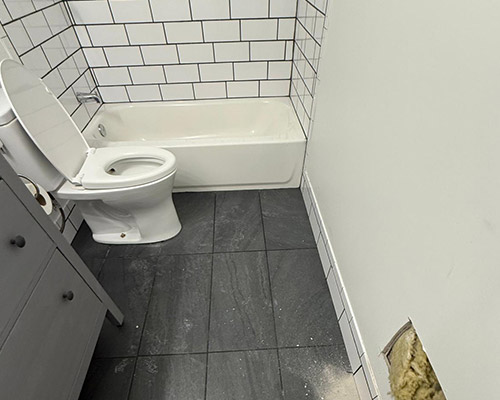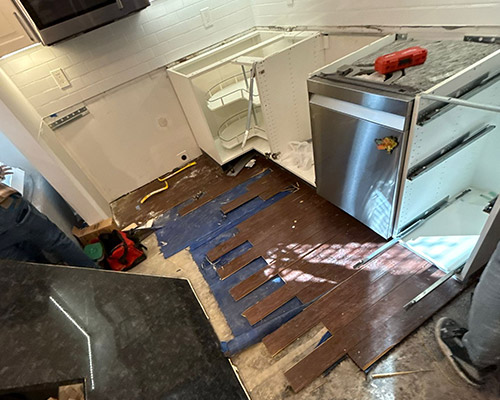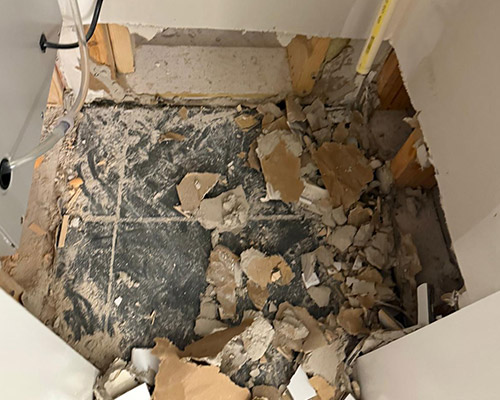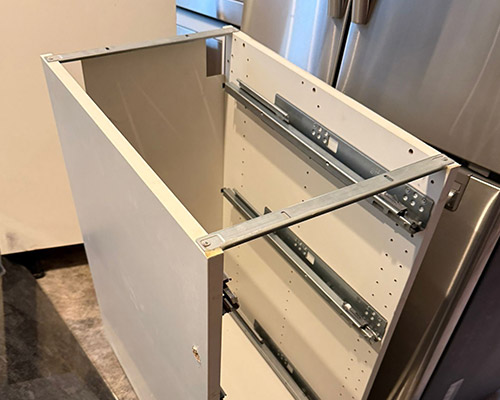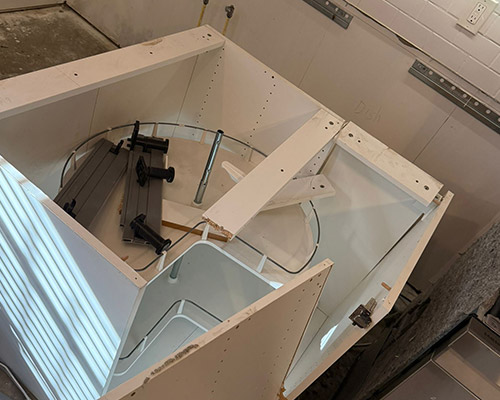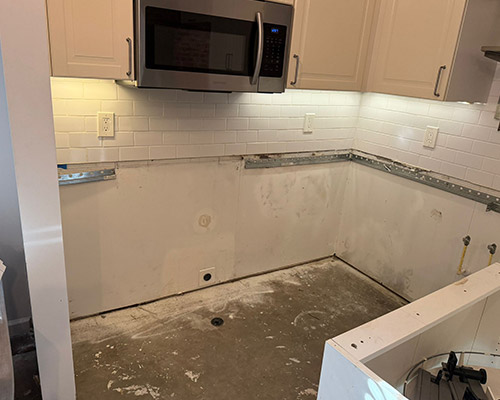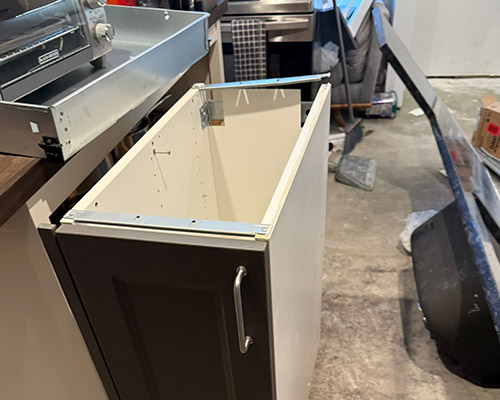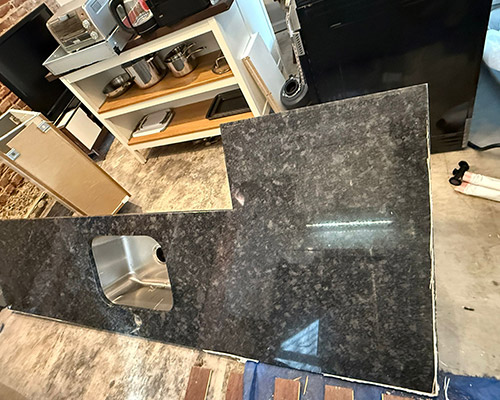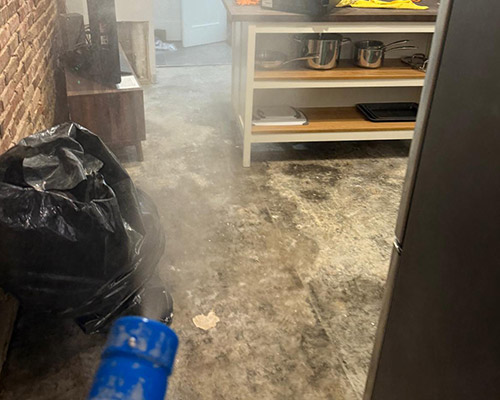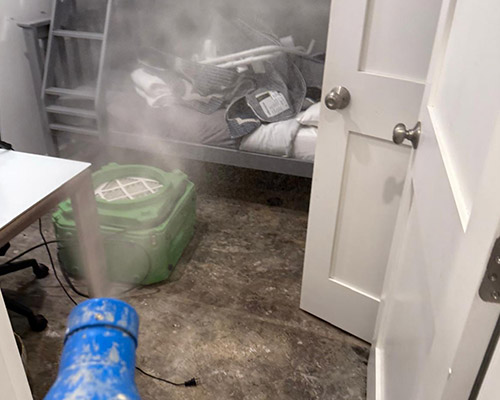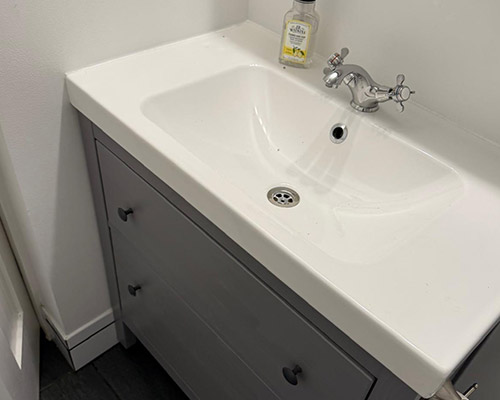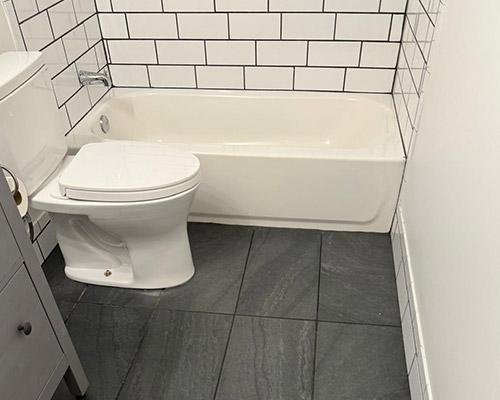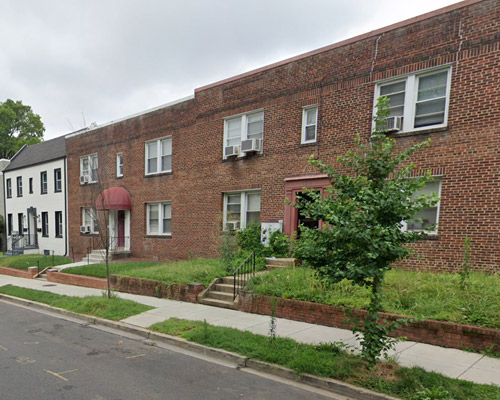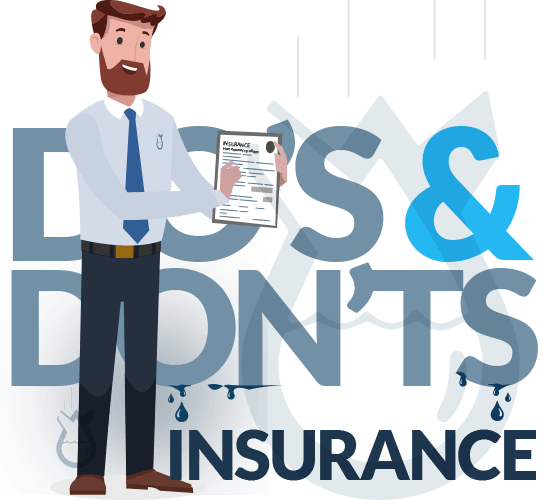Water Damage Restoration and Mold Treatment in Washington, DC 20002
In early December 2024, a sudden sewage backup turned a residence on Holbrook Street Northeast, Washington, DC 20002, into a hazardous, waterlogged environment. The situation quickly escalated into a full-blown emergency as contaminated water infiltrated the basement footwells and spread into key living areas.
The homeowner quickly realized that this was more than a minor spill - this was a situation that demanded expert intervention. With potential water damage restoration cost concerns looming, Flood Damage Pro was called in to prevent further deterioration and to safeguard the property against long-term structural and health issues.
PROJECT INFORMATION
PROJECT WORK SUMMARY
- On-site assessment and damage estimate
- Water Damage Restoration:
- Set up EQ LGR dehumidifiers (2 units for 3 days)
- Mold treatment -> Set up EQ air scrubbers (3 units for 3 days, 1 per room)
- Drywall removal (bedroom & behind cabinets)
- Cabinet & countertop removal (granite integrity not guaranteed)
- Wood floor removal in each bedroom
- Basement floor removal (sewage-affected)
- Apply antimicrobial treatment to disinfect concrete floors (sewage-affected)
- Clean & disinfect bathroom tile
- Deep clean & disinfect concrete floors in bedrooms
- Trash disposal
- Comprehensive final cleaning
- Final inspection
Emergency Response & Initial Assessment
From the moment Flood Damage Pro received the distress call, our approach was methodical and decisive. The primary objectives were to extract standing water, remove all contaminated materials, thoroughly disinfect all affected surfaces, and implement robust mold remediation measures.
Upon arrival on Holbrook Street Northeast, technician Jose conducted an extensive on-site water damage estimate. His goal was to identify every area impacted by the sewage backup - from the basement to the upstairs rooms where hardwood flooring had begun to absorb moisture. During his detailed assessment, several key issues were identified:
- Widespread Water Intrusion: standing water was found pooling in the basement footwells, a clear sign that the drainage system was overwhelmed.
- Contaminated Materials: the sewage had permeated hardwood floors, wetting the wood in each bedroom, and had also compromised drywall in areas like the bedroom and behind cabinets.
- Hidden Moisture Risks: beyond the visible damage, moisture had seeped into wall cavities and under baseboards, setting the stage for potential mold growth if not properly treated.
- Structural Concerns: the damage to both the flooring and the drywall indicated that the structure was at risk, and immediate remediation was necessary to prevent long-term issues.
With these findings, Flood Damage Pro outlined a detailed restoration plan aimed at tackling the crisis head-on while also considering the broader implications on water damage restoration cost.
Water Damage Restoration Process on Holbrook St NE, Washington, DC 20002
To address the extensive damage, the restoration was divided into distinct phases over three days, each with a specific set of tasks designed to fully remediate the affected areas.
Day 1 - On-Site Assessment, Containment, and Initial Restoration
- On-site water damage estimate: technician Jose conducted a comprehensive on-site assessment to evaluate the extent of the damage. This included identifying visible structural issues and detecting hidden moisture pockets that could have contributed to mold growth.
- Containment setup: technicians installed plastic sheeting and sealed off affected areas with containment barriers to prevent cross-contamination. Negative air pressure was established where necessary to minimize the spread of mold spores and airborne contaminants.
- Set up equipment: two EQ LGR dehumidifiers and three HEPA-equipped air scrubbers (500cfm, one per room) were installed to control humidity and filter airborne contaminants. These units operated continuously for three days.
- Drywall removal (bedroom & behind cabinets): water-damaged drywall was carefully removed from the bedroom and behind cabinetry to prevent moisture entrapment and prepare for thorough cleaning and treatment.
- Cabinet & countertop removal: cabinets and countertops were removed where necessary to access contaminated areas. While removal was performed with caution, the integrity of the granite was not guaranteed.
- Wood floor removal (each bedroom): all hardwood flooring in the bedrooms, compromised by water and potential sewage contamination, was removed to eliminate hidden moisture pockets.
- Basement floor removal (sewage-affected): the damaged basement flooring, which had been exposed to sewage water, was entirely removed to prevent bacterial and mold growth.
Day 2 - Disinfection and Mold Treatment
- Applied antimicrobial treatment to disinfect concrete floors (sewage-affected): after the floor removal, an antimicrobial solution was applied to disinfect the exposed concrete surfaces, neutralizing bacteria and mold spores.
- Cleaned & disinfected bathroom tile: bathroom tiles were thoroughly cleaned and disinfected to eliminate any sewage-related contaminants and prevent bacterial spread.
- Deep cleaned & disinfected concrete floors in bedrooms: all bedroom concrete floors were scrubbed and disinfected to remove lingering contaminants and prepare the surfaces for drying.
- Trash disposal: all contaminated materials, including drywall, flooring, and debris, were collected and disposed of following strict safety and environmental protocols.
Day 3 - Equipment Removal, Final Cleaning, and Inspection
- Removed equipment: after three days of continuous operation, all deployed equipment, including air scrubbers and dehumidifiers, was removed, having successfully completed the drying and air filtration process.
- Performed comprehensive final cleaning: a final deep cleaning was conducted to remove any remaining debris, microbial contaminants, and dust from all affected areas.
- Final inspection completed: the property underwent a final inspection to confirm that all remediation efforts were successfully completed and that the environment was restored to a safe, habitable condition.
Final Reflections
By December 6, 2024, Flood Damage Pro had transformed a hazardous, water-damaged property into a safe, dry space in just three days. The process began with a detailed on-site water damage estimate to identify all affected areas. Sewage-soaked flooring in the basement was taken out, and the exposed concrete was disinfected with an antimicrobial solution.
This systematic approach not only addressed the immediate crisis of a severe sewage backup but also established long-term protection against future moisture and mold issues. Flood Damage Pro's expert intervention, from initial assessment through rigorous disinfection and advanced equipment deployment, showcases the critical importance of prompt professional action in reducing water damage restoration cost and safeguarding your home's structural integrity and indoor air quality. So, if you need our help, we're ready right now - call 202-545-3622.
On every job

